
Overview
Drinking Water Treatment Plant Optimization refers to the process of enhancing the efficiency, effectiveness, and overall performance of water treatment facilities that provide clean and safe drinking water to communities. It involves employing various strategies, technologies, and practices to improve the quality of treated water, streamline operations, minimize resource usage, and ensure compliance with regulatory standards. Optimization aims to achieve the best possible balance between cost, quality, and sustainability in water treatment processes.
Depending on specific features and functions, GAO Tek’s water quality testers are sometimes referred to as Water quality monitors, Aquatic health analyzers, H2O purity sensors, Liquid clarity detectors, Aquatic chemistry analyzers, Hydrosphere diagnostic tools, Aqua analysis devices, Fluid integrity testers, Hydrochemical analyzers, Liquid contaminant detectors, Aqua check instruments, Hydration quality probes, Liquid composition analyzers.
GAO Tek’s water quality testers have the following applications in drinking water treatment plant optimization:
- Monitoring Parameters: GAO’s water quality testers can measure various parameters that determine the safety and quality of drinking water, including pH, turbidity, dissolved oxygen, chlorine levels, conductivity, and more. Ensuring these parameters are within the acceptable range is vital for producing safe drinking water.
- Real-time Monitoring: Real-time monitoring of water quality is essential in DWTP optimization. By continuously tracking water quality parameters, plant operators can quickly detect any deviations from the desired levels and take immediate corrective actions.
- Process Optimization: Our water quality testers provide data that can help optimize treatment processes. By analyzing the data collected, operators can fine-tune the treatment processes to ensure maximum efficiency in removing contaminants and producing clean, safe drinking water.
- Quality Assurance: Regular and accurate water quality testing is crucial for maintaining compliance with regulatory standards and ensuring that the water meets the quality guidelines set by health authorities.
- Troubleshooting: When unexpected issues arise, water quality testers can help plant operators identify the root cause of problems. For instance, if there’s an increase in turbidity, the source of the issue can be identified and addressed promptly.
- Data Analysis: The data collected by water quality testers can be analyzed over time to identify trends, patterns, and potential areas for improvement. This data-driven approach can lead to more effective and efficient water treatment processes.
- Automation and Integration: As technology advances, automation and integration of water quality testers with plant control systems can enhance the efficiency of DWTP operations. Automated systems can respond quickly to changing conditions and make necessary adjustments without human intervention.
More information on water quality testers and their applications in other industries can be found on this page.
This category page lists related products.
GAO Tek’s targeted markets are North America, particularly the U.S., Canada, Mexico, and Europe. Hence, in addition to English, this website gaotek.com is offered in other major languages of North America and Europe such as Spanish, French, German, Italian, Polish, Ukrainian, Romanian, Russian, Dutch, Turkish, Greek, Hungarian, Swedish, Czech, Portuguese, Serbian, Bulgarian, Croatian, Danish, Finnish, Norwegian, Slovak, Catalan, Lithuanian, Bosnian, Galician, Slovene, Latvian, Estonian, Welsh, Icelandic, and Irish.
Complying with Drinking Water Treatment Plant Optimization Standards
GAO Tek’s water quality testers comply or help our clients comply with Drinking Water Treatment Plant Optimization such as:
- ISO 9297
- ISO 7027
- ASTM D1252
- ASTM D1293
- ASTM D6470
- AWWA B300
Complying with Government Regulations
GAO Tek’s water quality testers comply or help our customers comply with the U.S. government regulations such as:
- Safe Drinking Water Act (SDWA)
- National Primary Drinking Water Regulations (NPDWRs)
- Total Coliform Rule (TCR)
- Surface Water Treatment Rule (SWTR)
- Disinfection Byproduct Rule (DBPR)
- Lead and Copper Rule (LCR)
GAO Tek’s water quality testers comply or help our clients comply with the Canadianregulations such as:
- Guidelines for Canadian Drinking Water Quality
- Safe Drinking Water for First Nations Act
- Provincial and Territorial Drinking Water Regulations
- Canadian Environmental Protection Act, 1999
- Ontario Drinking Water Quality Standards
- British Columbia Drinking Water Protection Act
GAO Tek’s water quality testers comply or help our clients comply with the Mexicanregulations such as:
- NOM-127-SSA1-1994
- NOM-179-SSA1-2010
- NOM-013-CONAGUA-2004
- Federal Law on Metrology and Standardization (LFMN)
- National Water Law (Ley de Aguas Nacionales)
- National Institute of Ecology and Climate Change (INECC)
GAO Tek’s water quality testers comply or help our clients comply with the Europeanregulations such as:
- European Drinking Water Directive (98/83/EC)
- Regulation (EU) 2015/1787 on new drinking water parameters
- ISO 5667-5
- Drinking Water Quality Regulations (England) 2010
- TrinkwV (German Drinking Water Ordinance)
- Decree of the President of the Council of Ministers of Italy (D.P.C.M. 174/2004)
Case Studies of Water Quality Testers in Drinking Water Treatment Plant Optimization
Water quality testers are sometimes called as Water quality monitors, Aquatic health analyzers, H2O purity sensors, Liquid clarity detectors, Aquatic chemistry analyzers, Hydrosphere diagnostic tools, Aqua analysis devices, Fluid integrity testers, Hydrochemical analyzers, Liquid contaminant detectors, Aqua check instruments, Hydration quality probes, Liquid composition analyzers.
Here are some practical examples of using water quality testers in drinking water treatment plant optimization:
A case study could focus on a water treatment plant’s efforts to minimize the formation of disinfection byproducts (DBPs) by using advanced water quality testers to monitor precursor compounds and adjusting treatment processes accordingly.
A case study might demonstrate how a treatment plant in the Northeast uses real-time turbidity monitoring to optimize coagulation, sedimentation, and filtration processes, ensuring efficient removal of particles and contaminants.
The case study could highlight a plant’s use of water quality testers to monitor pH levels and alkalinity in order to prevent corrosion in distribution systems, optimizing pH adjustment processes.
A DWTP that relies on surface water sources in the Midwest utilizes water quality testers to monitor turbidity levels continuously. The data helps operators optimize coagulation, flocculation, and sedimentation processes. By maintaining consistent low turbidity levels, the plant ensures efficient filtration and minimizes the risk of pathogens passing through the treatment process.
Water treatment plant in the Midwest uses advanced water quality testers that can detect specific algae species and their associated toxins. By identifying the presence of harmful algal blooms and their toxins early, the plant can take swift action to adjust treatment processes, activate additional barriers, and provide timely public notifications to ensure safe drinking water.
Louisiana DWTP faced challenges in identifying the source of occasional spikes in contamination levels, impacting the quality of treated water. Solution: The plant adopted an integrated monitoring system that included water quality testers capable of detecting a wide range of contaminants. By closely monitoring various parameters in both source and treated water, the plant was able to quickly identify the source of contamination events and take appropriate corrective actions.
Georgia DWTP struggled with maintaining consistent pH levels during the treatment process, affecting the efficiency of coagulation and chemical dosing. Solution: The plant deployed pH monitoring probes that provided real-time pH data. This data was used to automatically adjust lime dosing rates, ensuring optimal pH levels for effective coagulation and overall treatment performance.
Water treatment plant in Nevada incorporated advanced membrane integrity testing methods for its reverse osmosis process. By continuously monitoring membrane health and detecting potential fouling or damage early, the plant optimized system maintenance schedules, extended membrane life, and ensured consistent water quality.
A water treatment plant in Washington adopted a comprehensive data analytics approach to optimize its treatment processes. By analyzing historical water quality tester data, the plant identified trends and patterns, allowing them to fine-tune treatment processes, reduce chemical usage, and achieve greater energy efficiency.
This case study could explore how a DWTP in Canada uses water quality testers to monitor UV disinfection systems. The study might discuss how continuous monitoring of UV intensity and transmittance ensures the effectiveness of the disinfection process.
Highlighting a scenario where water quality testers are employed to monitor chlorine residuals throughout the distribution system. This case study could demonstrate how maintaining consistent residual levels enhances water safety and quality for consumers.
In a remote community with limited access to technical expertise, water quality testers equipped with remote monitoring capabilities were utilized. The plant operators could receive real-time data on water quality parameters and adjust treatment processes from a central location, ensuring safe drinking water for the community.
Thames Water, one of the largest water and wastewater service providers in the UK, has implemented advanced water quality testing and monitoring systems in their treatment plants. These systems help optimize treatment processes, ensure compliance with regulations, and respond effectively to changes in water quality.
The Berliner Wasserbetriebe, responsible for water supply in Berlin, employs water quality testers to monitor the city’s drinking water. They have utilized real-time monitoring systems to optimize the addition of treatment chemicals and ensure water quality throughout the distribution network.
GAO RFID Inc. RFID Hardware , a sister company of GAO Tek Inc., is ranked as a top 10 RFID suppliers in the world. Its RFID, BLE, and IoT products have also been widely used in drinking water treatment plant optimization.
Research, Technology & Professional Services Industries | RFID Solutions
Use of Water Quality Testers with Leading Software and Cloud Services in Drinking Water Treatment Plant Optimization
GAO Tek has used or has facilitated its customers to use water quality testers with some of the leading software and cloud services in their applications. Examples of such leading software and cloud services include:
- Wonderware System Platform
- Siemens SIMATIC WinCC
- Hach Water Information Management Solution (WIMS)
- Aquatic Informatics AQUARIUS
- LIMS (Laboratory Information Management System)
- Hach Water Information Management Solution (WIMS)
- Amazon Web Services (AWS)
- Microsoft Azure
- Google Cloud Platform (GCP)
- Aquatic Informatics
- EQuIS
- Hach WIMS (Water Information Management Solution)
GAO Tek’s water quality testers and their applications in other industries are listed on this page.
Chemical and Life Sciences Products
Other related products can be found at this category page
Meeting Customers’ Demands
Large Choice of Products
In order to satisfy the diversified needs of their corporate customers, GAO Tek Inc. and its sister company GAO RFID Inc. together offer a wide choice of testing and measurement devices, network products, RFID, BLE, IoT, and drones.
Fast Delivery
To shorten the delivery to our customers, GAO has maintained a large stock of its products and is able to ship overnight within continental U.S. and Canada, and fast delivery to Mexico and Europe from the nearest warehouse.
Local to Our Customers
We are located in both the U.S. and Canada. We travel to customers’ premises if necessary. Hence, we provide a very strong local support to our customers in North America, particularly the U.S., Canada and Mexico and Europe. Furthermore, we have built partnerships with some integrators, consulting firms and other service providers in different cities to further strengthen our services. Here are some of the service providers in drinking water treatment plant optimization we have worked with to serve our joint customers:
- Environmental Consulting Firms
- Water Treatment Solution Providers
- Technology Integrators with Industry Expertise
- SCADA System Integrators
- IoT Solution Providers
- Data Analytics and Business Intelligence Consultants
- SCADA and Control System Consultants
- Environmental Compliance and Regulatory Consultants
GAO Has Many Customers in Drinking Water Treatment Plant Optimization
The water quality testers from both GAO Tek Inc. and GAO RFID Inc. have been widely used in drinking water treatment plant optimization by many customers, including some leading companies. Here is more information on applications of GAO RFID Inc.’s water quality testers in drinking water treatment plant optimization.
Chemical and Life Sciences Products
Here are some GAO’s customers in drinking water treatment plant optimization:
- EON
- CASCADE
- RAMBOLL
- WOOD
- GEOSENSE
- HERON
- SOLINST
- GSI
- In-Situ
- TETRA TECH
- HALEY ALDRICH
- GES
- AQUATIC
- XYLEM
- HACH
- Geosyntec
- CS
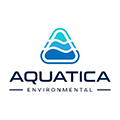
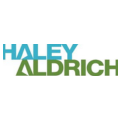

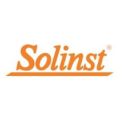
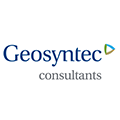

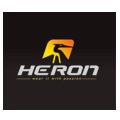
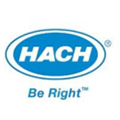

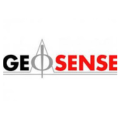


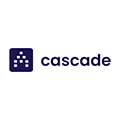
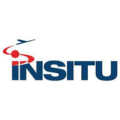

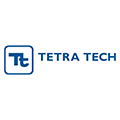

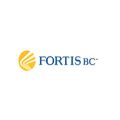
Contact Us
If you are interested in our products, services or partnering with us, please feel free to contact us by filling out this form:
or email us at sales@gaotek.com
